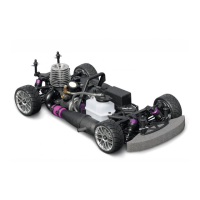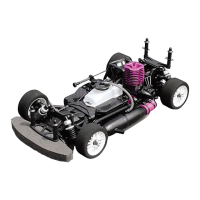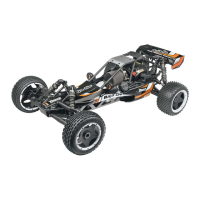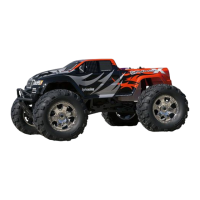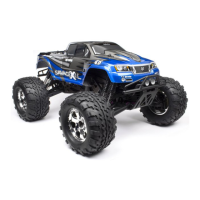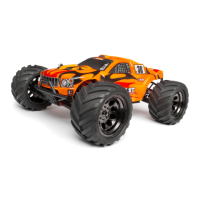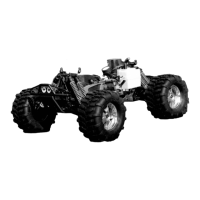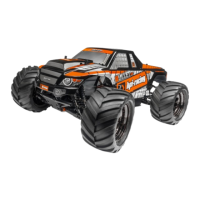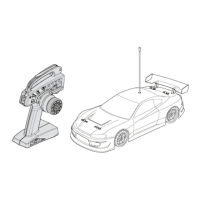
Do you have a question about the HPI Racing RS4 SPORT3 and is the answer not in the manual?
| Scale | 1/10 |
|---|---|
| Shock Type | Oil-Filled |
| Battery | 7.2V NiMH |
| Radio System | 2.4GHz |
| Tire Type | Rubber |
| Motor Type | Brushed |
| Suspension | Independent |
| Speed Control | Electronic |
Explains the meaning of caution and attention symbols used in the manual.
Covers safe practices for operating the vehicle and handling batteries.
Lists the main parts included in the kit, like transmitter and car.
Details kit accessories and separately needed items.
Instructions for charging the vehicle's battery, including safety notes.
Guide to installing batteries into the transmitter, noting correct orientation.
Details on setting up transmitter switches like reverse and mode.
Steps for preparing the vehicle chassis, like removing the body.
Instructions for installing the battery pack into the vehicle chassis.
Guide to setting up the ESC, including battery modes and voltage protection.
Steps to verify the vehicle's fail-safe system is operating correctly.
Detailed steps to set up the fail-safe system for the RC car.
Guide to setting the maximum limits for steering and throttle servos.
Steps for powering on the transmitter and receiver correctly.
Instructions on how to drive the RC car, including sound signals.
Procedure to check the operational range of the radio control system.
Instructions for adjusting the steering trim for straight-line driving.
Explains the function of the steering wheel and throttle trigger.
Details on adjusting throttle trim and steering dual rate.
Describes different ways to achieve reverse operation (forward/brake/reverse).
Guidance on practicing driving techniques like turning.
Correct procedure for turning off the RC unit and transmitter.
Guidelines and warnings for operating the vehicle in wet conditions.
Troubleshooting steps for common issues like the car not moving or losing control.
Addresses problems with steering and throttle functions being reversed or incorrect.
Provides a chart and general advice for vehicle maintenance.
Guidance on using part numbers for purchasing replacements.
Steps for cleaning the chassis, lubricating metal contacts, and checking screws.
Instructions on inspecting the chassis for any damaged components.
Procedure for ensuring tires are securely attached to wheels and re-gluing if necessary.
Steps for adjusting the pinion and spur gear mesh for smooth operation.
Detailed guide on adjusting motor position for correct gear meshing.
Table showing recommended gear ratios for speed and acceleration.
Instructions for inspecting shocks for oil leaks or bent shafts.
Basic steps for removing and installing shock absorbers.
Detailed steps for filling shock absorbers with oil and removing air bubbles.
Guidance on checking the differential for oil leakage and gear wear.
Steps for assembling the differential, noting gear orientation.
Detailed instructions for assembling the differential, including part placement.
Explains the function of transmitter controls like throttle trim and steering trim.
Details on power switch, battery level indicator, and antenna use.
Information on binding the receiver and adjusting end points (EPA).
Shows how to connect the receiver, ESC, and servo.
Explains ESC protection features against overheating and signal loss.
Steps to program the receiver to recognize a specific transmitter code.
Instructions for setting up the fail-safe system.
Detailed steps to set up the fail-safe system, including confirmations.
Guide to setting the maximum limits for steering and throttle servos.
Exploded view showing the assembly of the main chassis components.
Further exploded views illustrating various assemblies like shocks and differentials.
Comprehensive list of all parts with their numbers and descriptions.
Lists optional parts available for tuning and customization.

